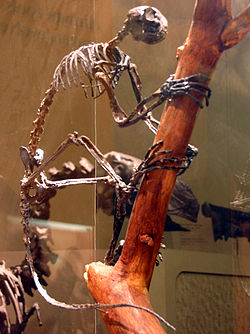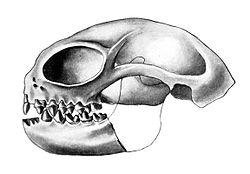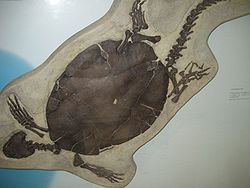| Bridger Formation | |
|---|---|
| Stratigraphic range: Bridgerian - Uintan | |
 Grizzly Buttes, a major feature of the Bridger Formation | |
| Type | Formation |
| Underlies | Bishop Conglomerate |
| Overlies | Green River Formation |
| Thickness | 215 feet (66 m) - 270 feet (82 m) [1] |
| Location | |
| Region | Wyoming |
| Country | United States |
| Type section | |
| Named for | Bridger Wilderness |
| Named by | F.V. Hayden |
The Bridger Formation is a geologic formation in southwestern Wyoming. It preserves fossils dating back to the Bridgerian and Uintan stages of the Paleogene Period. [2] The formation was named by American geologist Ferdinand Vandeveer Hayden for Fort Bridger, which had itself been named for mountain man Jim Bridger. [3] The Bridger Wilderness covers much of the Bridger Formation's area.
Contents
- History
- Geology
- Palaeobiology
- Eutherians
- Artiodactyls
- Carnivoramorphans
- Carnivorans
- Cimolestans
- Creodontans
- Dinoceratans
- Eulipotyphlans
- Leptictidans
- Macroscelids
- Mesonychids
- Perissodactyls
- Palaeanodonta
- Pholidotans
- Plesiadapiformes
- Primates
- Rodentia
- Metatherians
- Herpetotheriidae
- Peradectidae
- Birds
- Gruiformes
- Strigiformes
- Fish
- Amiidae
- Ariidae
- Lepisosteidae
- Osteoglossidae
- Reptiles
- Crocodilia
- Squamates
- Testudines
- Incertae sedis
- See also
- References





















































